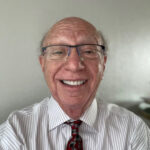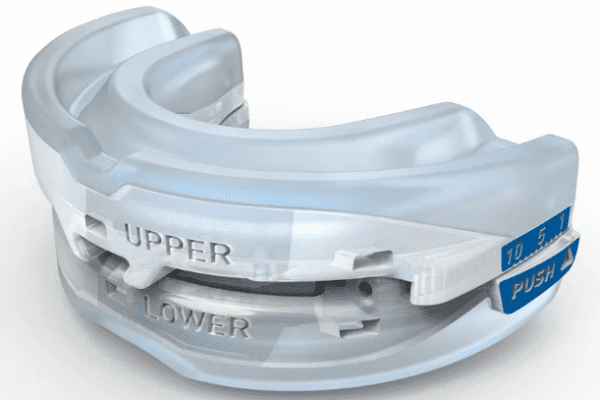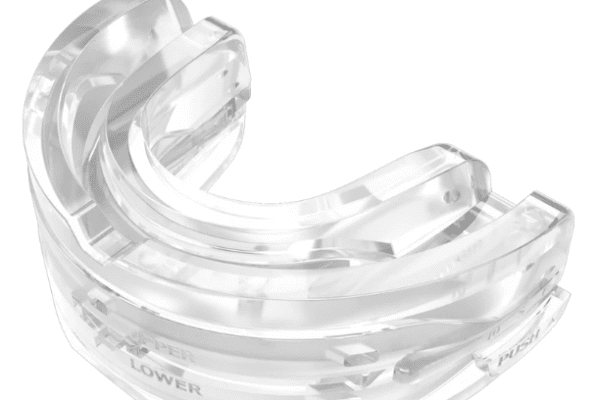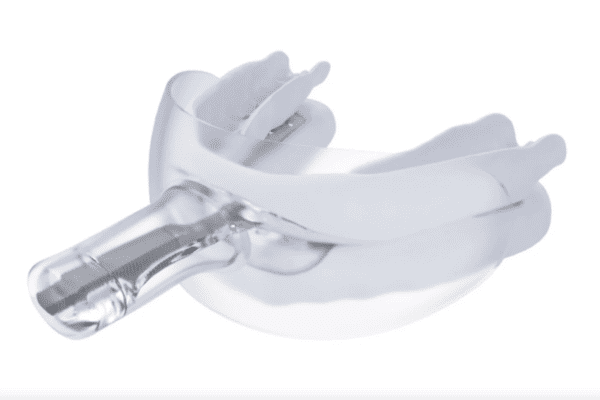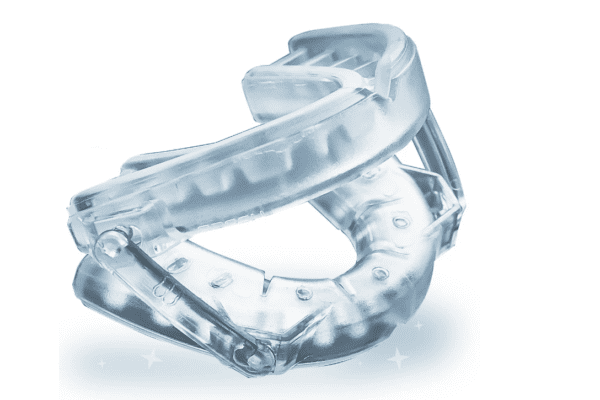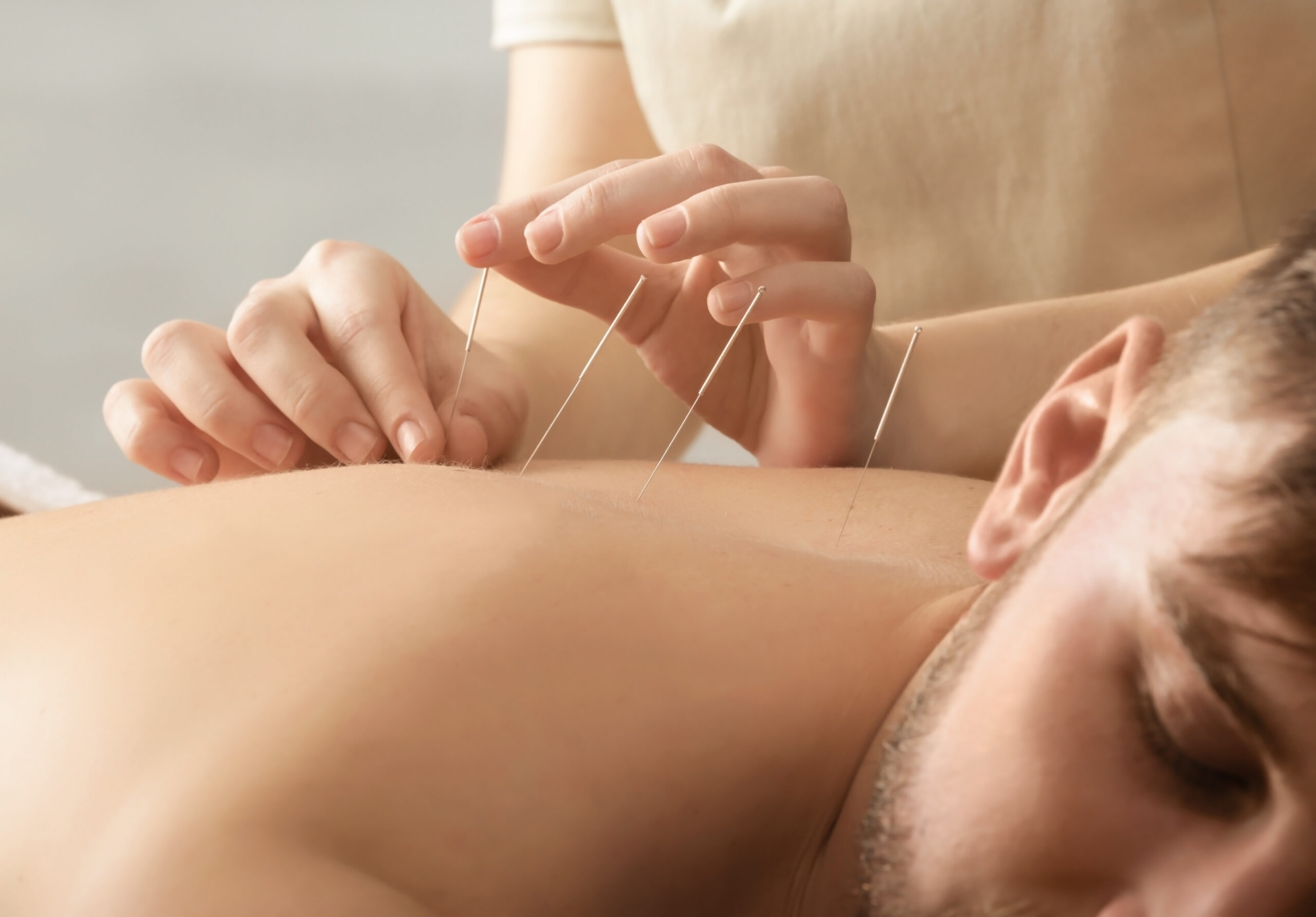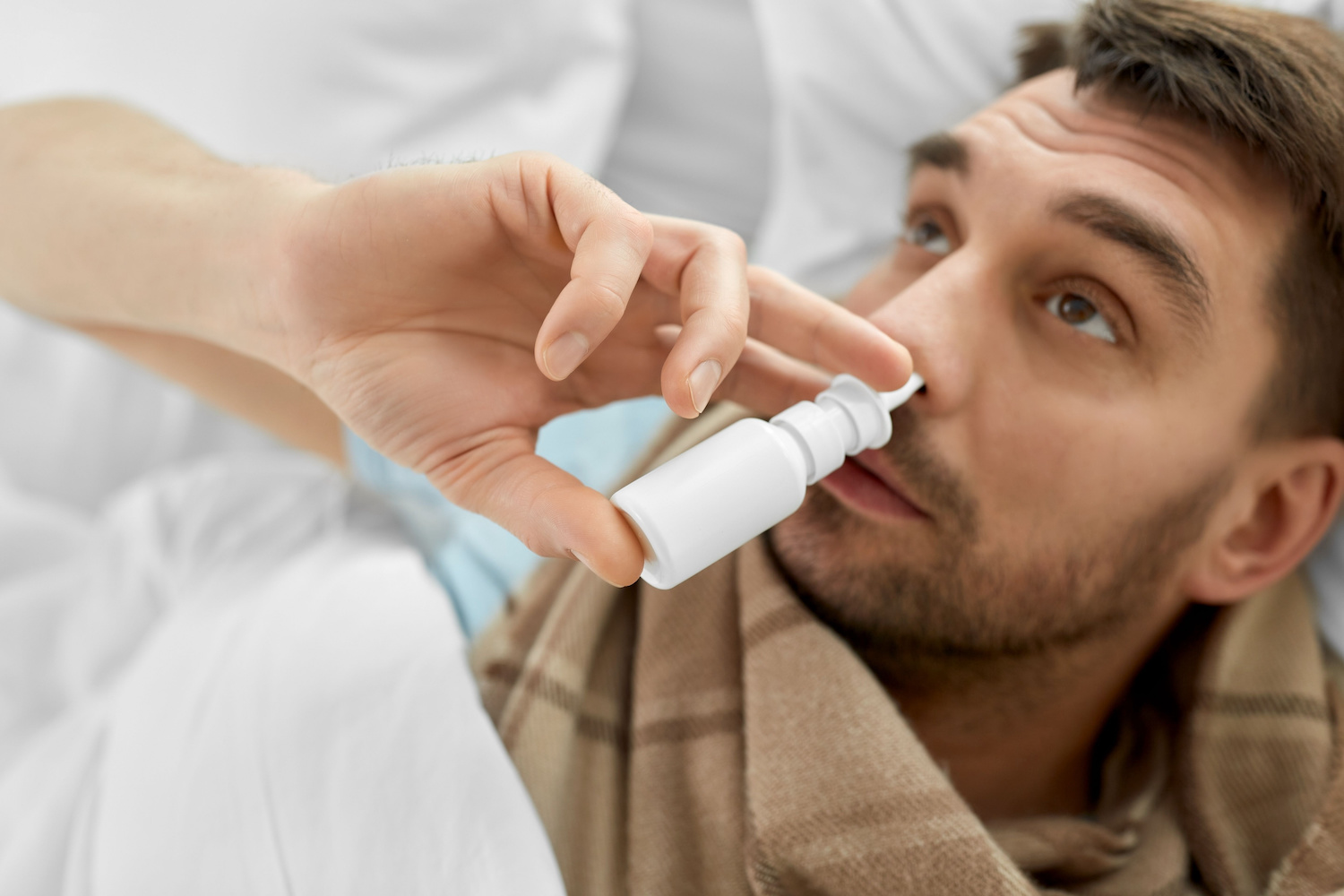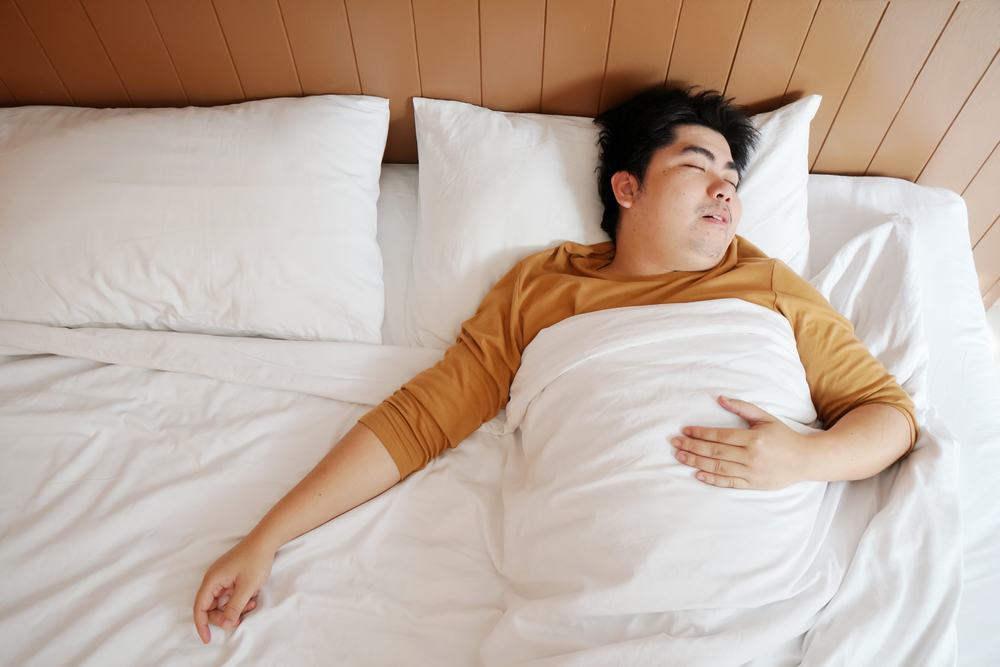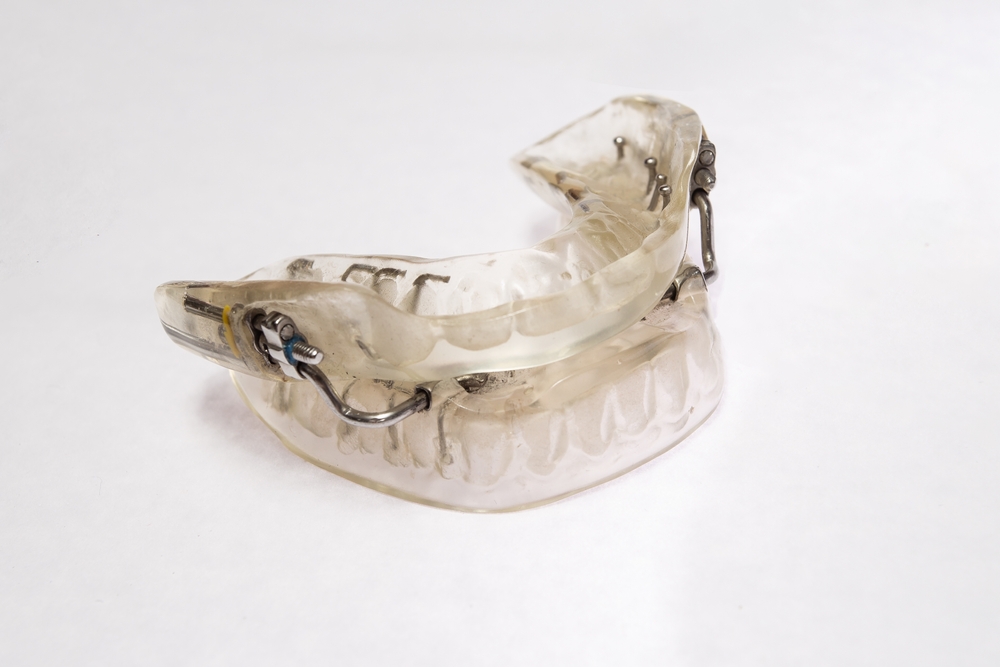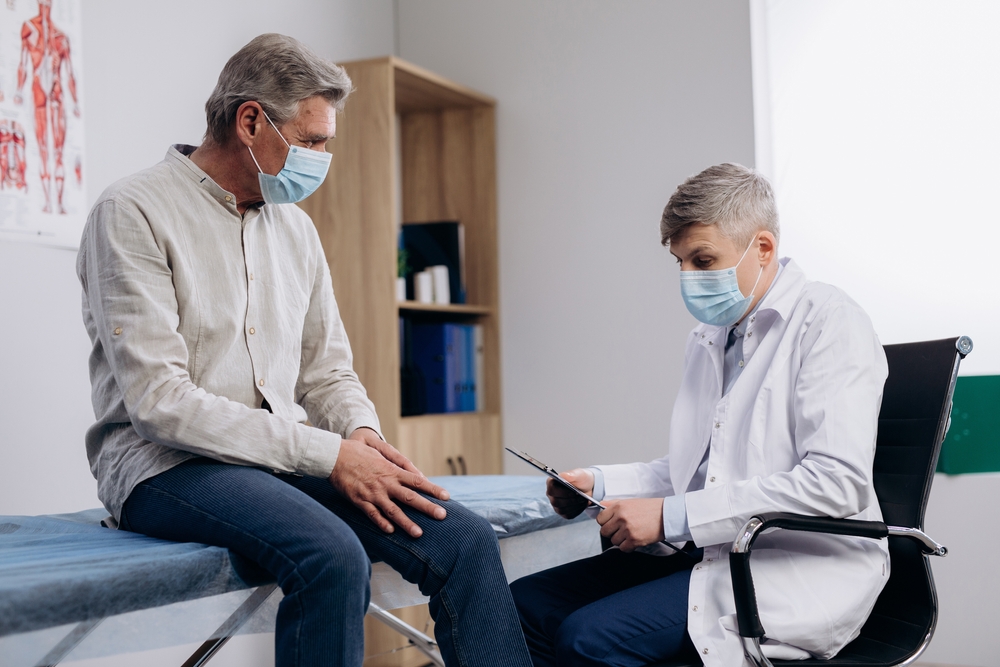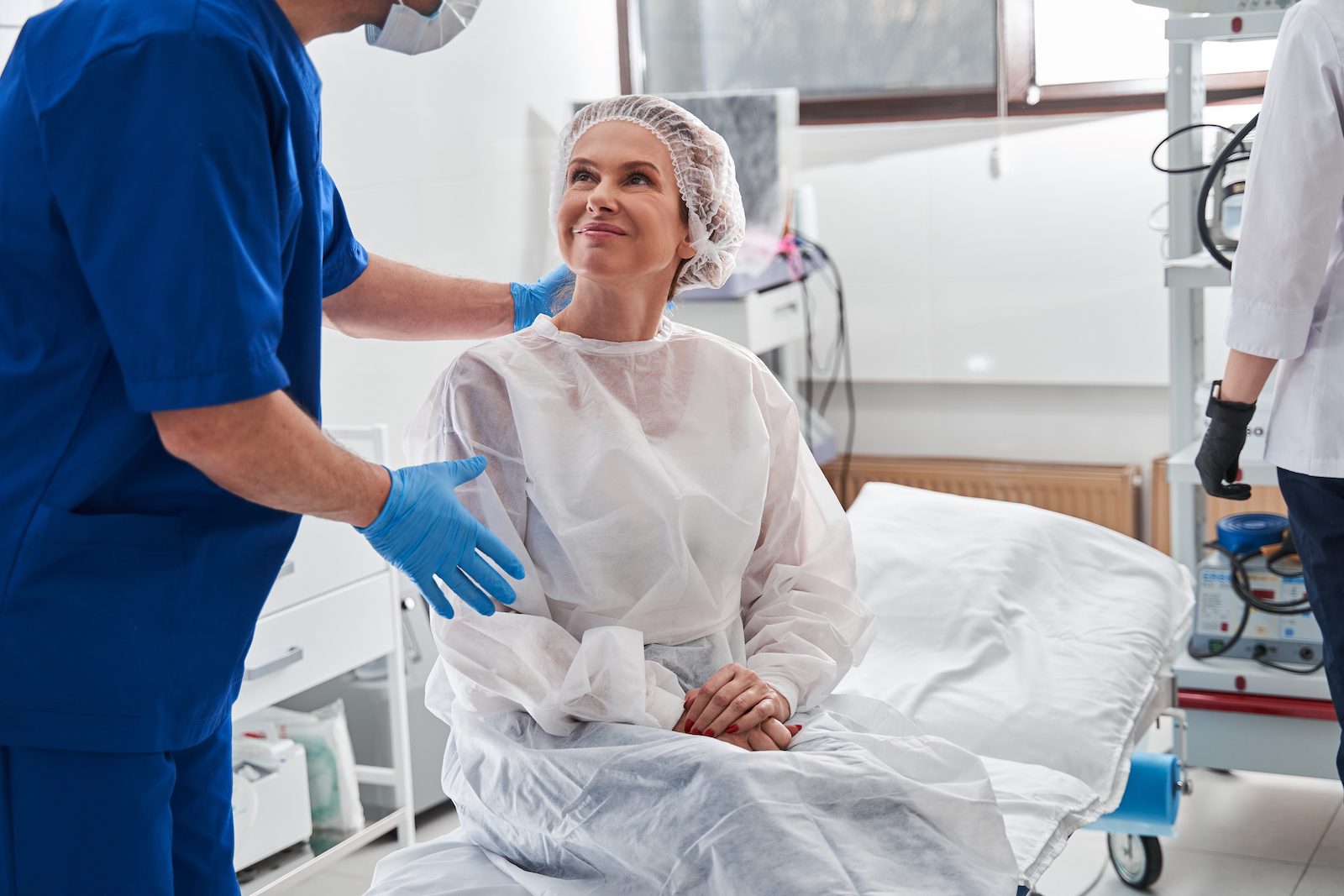Oral appliances are special mouthpieces to help people with obstructive sleep apnea. These appliances, primarily worn only at night, keep the airway open and can ease the symptoms of sleep apnea.
If left untreated, obstructive sleep apnea can result in excessive daytime sleepiness and many serious health consequences, such as hypertension, stroke, and atrial fibrillation. Fortunately, treatment for sleep apnea can be highly effective in resolving symptoms and preventing related complications.
What Are Oral Appliances for Sleep Apnea?
There are two main types of oral appliances used in the treatment of obstructive sleep apnea (OSA) in adults: mandibular advancement devices (MADs) and tongue-retaining devices (TRDs). Another treatment called rapid maxillary expansion (RME) uses an oral appliance to treat children with obstructive sleep apnea.
Additionally, the Food and Drug Administration (FDA) has approved a new oral appliance called a tongue muscle stimulation device that uses electrical signals to treat snoring and mild sleep apnea.
Oral appliances are usually prescribed by your doctor or a sleep specialist. They will likely refer you to a dentist or orthodontist with special training in making custom-fit appliances. It is important to have regular follow-up visits with your doctor and dental provider to help manage any side effects and to make sure the treatment is working.
The effectiveness of oral appliance therapy is almost equivalent to continuous positive airway pressure (CPAP) therapy. However, there is about a 90% compliance rate with oral appliance therapy compared to about a 50% compliance rate for CPAP therapy.
Mandibular Advancement Device (MAD)
Mandibular advancement devices (MADs) are the most frequently used oral appliances in the treatment of OSA. They are also sometimes called mandibular repositioning appliances or mandibular advancement splints.
MADs are secured to the teeth and move your lower jaw forward. Moving the lower jaw repositions the tongue forward, pulling it out of the airway. This helps improve breathing by keeping your airway open while you sleep and helps reduce or eliminate snoring.
MADs look similar to mouth guards and come in a variety of designs. They can be either one-piece or two-piece devices, and vary in size, material, the number of teeth they cover, and how adjustable they are.
Two-piece MADs allow for more precise adjustments, tend to be more comfortable, and are often more successful in the treatment of sleep apnea than one-piece oral appliances.
Over-the-counter MADs, or “boil and bite” devices, are fitted by heating and molding the appliance to the teeth. Typically, they do not fit properly, are uncomfortable, and can lead to a false sense of security in that they may lessen snoring, but they do not treat OSA effectively. For these reasons, they are not usually recommended by sleep specialists.
For about 70% of people with OSA, MAD therapy can reduce the severity of their condition by more than half. And for a third of people, MAD therapy completely resolves their OSA symptoms.
Research shows that MAD therapy reduces the amount of paused breathing events during the night and increases the amount of oxygen in the blood. MAD therapy can also decrease daytime fatigue and improve blood pressure, cognitive function, mood, and overall well-being.
Tongue Retaining Device (TRD)
A tongue retaining device, or tongue stabilizing device, is a type of oral appliance that is worn in the mouth during sleep. It’s designed to hold the tongue in a forward position to help prevent it from blocking the airway. The device is custom-fitted to a person’s mouth and holds the tongue in place using a small suction bulb.
TRDs are less common and have not been as well studied. However, research suggests that TRDs decrease instances of interrupted breathing and reduce daytime sleepiness.
One advantage of TRDs is that they can be used in people with missing teeth or in people who cannot use MADs due to misaligned teeth or jaws. However, studies show that people are more likely to stop using a TRD because of discomfort and negative side effects.
Rapid Maxillary Expansion (RME)
Rapid maxillary expansion (RME) is an orthodontic treatment using a device, called an expander, to gradually widen the upper jaw over time. The expander is worn at all times and is custom-made to sit on the roof of the mouth and attach to the back upper teeth.
RME is a treatment option typically recommended for children with OSA who have a narrow upper jaw, crossbite, or who have OSA following surgical removal of their tonsils and adenoids. The expander forces the upper jaw bones to gradually separate, which can help increase the size of the airway.
Studies show that RME is highly effective in reducing the amount of paused breathing events seen in OSA and that up to 25% of children may be cured. In some children, a combination of RME and surgery to remove the tonsils and adenoids may be most effective in treating OSA.
Tongue Muscle Stimulation Device
The tongue muscle stimulation device is a newly approved oral appliance for the treatment of snoring and mild sleep apnea. It sends small electric signals to your tongue to strengthen muscle tone. Over time, this helps keep your airway open and prevents your tongue from blocking your airway while you sleep.
The device is a small mouthpiece that you wear during the daytime. For the first six weeks, you wear the mouthpiece for 20 minutes a day. After this period, you reduce use to once a week for 20 minutes.
Initial research suggests that in people with mild OSA, a tongue muscle stimulation device can reduce paused breathing events by almost half. However, further research is needed to fully understand how effective it is in treating OSA compared to other oral appliances.
How Does Oral Appliance Therapy Treat Sleep Apnea?
Oral appliances can help increase the size of the airway in the back of the throat during sleep. This can help reduce the collapse of the airway, seen in OSA, and improve breathing.
Mandibular advancement devices clear your airway by moving your jaw forward, while tongue retaining devices (TRDs) keep your tongue in a forward position to prevent blockages. Tongue muscle stimulation devices improve muscle tone, and rapid maxillary expansion devices permanently widen the roof of the mouth to open the airway.
Who Can Benefit From Oral Appliance Therapy for Sleep Apnea?
Oral appliance therapy may be a good treatment choice for people who can’t tolerate CPAP therapy, who prefer another type of treatment, or for whom CPAP therapy is not effective at controlling their symptoms.
Generally, oral appliances have been recommended for mild to moderate sleep apnea. But there is increasing evidence that MAD therapy, specifically, can be effective in treating severe OSA. Some people with mild to moderate sleep apnea do not respond to MAD therapy, whereas others with severe sleep apnea have an excellent response.
Despite ongoing research, it remains difficult to predict who will have the best response to oral appliance treatment. However, people are more likely to benefit from MAD therapy if they have a mild to moderate case of OSA, are younger, are female, and have a lower body mass index (BMI).
For some people, mouth exercises may be recommended along with oral appliance therapy. Also called myofunctional therapy, mouth exercises can be a valuable addition to oral appliance therapy to assist in repositioning the tongue and promoting nasal breathing.
Doctors often treat OSA in children by surgically removing the tonsils and adenoids. CPAP therapy can also be an effective treatment, but studies show that half of all children prescribed CPAP therapy do not use it consistently.
A combination of surgery and use of an oral appliance, such as rapid maxillary expansion, can be a highly effective treatment option for OSA in children. Specifically, those with enlarged adenoids and tonsils and a narrow upper jaw may benefit from this combination.
What Are the Advantages of Oral Appliance Therapy for Sleep Apnea?
An oral appliance may be a good treatment option for OSA if you are unable to tolerate a CPAP machine or prefer a different treatment. Many people find that oral appliances have advantages over CPAP or similar treatments for sleep apnea.
Compared to CPAP, oral appliances can be:
- Easier to use
- Compact
- Allows for more mobility
- Not reliant on electricity
- A good alternative when traveling
- Quieter
If you have been diagnosed with obstructive sleep apnea and are either unable to tolerate your CPAP therapy or are not a candidate for CPAP, talk to your doctor about whether an oral appliance may be appropriate for you.
What Are the Risks of Using Oral Appliances for Sleep Apnea?
You may experience side effects when first starting to use an oral appliance. The side effects depend on the type of oral appliance you use, but can include:
- Increased saliva production
- Dry mouth
- Tenderness in the gum tissues
- Mild discomfort in the teeth
- Grinding of teeth
- Joint pain
- Tenderness of the jaw joint
These side effects are generally mild and get better within a few weeks.
Other side effects may occur months to years after you begin using an oral appliance. Late side effects can include changes in your bite or movement of your teeth over time. This is why it’s important to continue to be monitored regularly by your dentist while using an oral appliance.
Additionally, oral appliances are not effective for everyone. Oral appliances such as MADs can help lessen the symptoms of sleep apnea for most people, but one in three people do not see much improvement from using a MAD. Therefore, it is important to speak with your doctor to see if you are a good candidate for this treatment.

